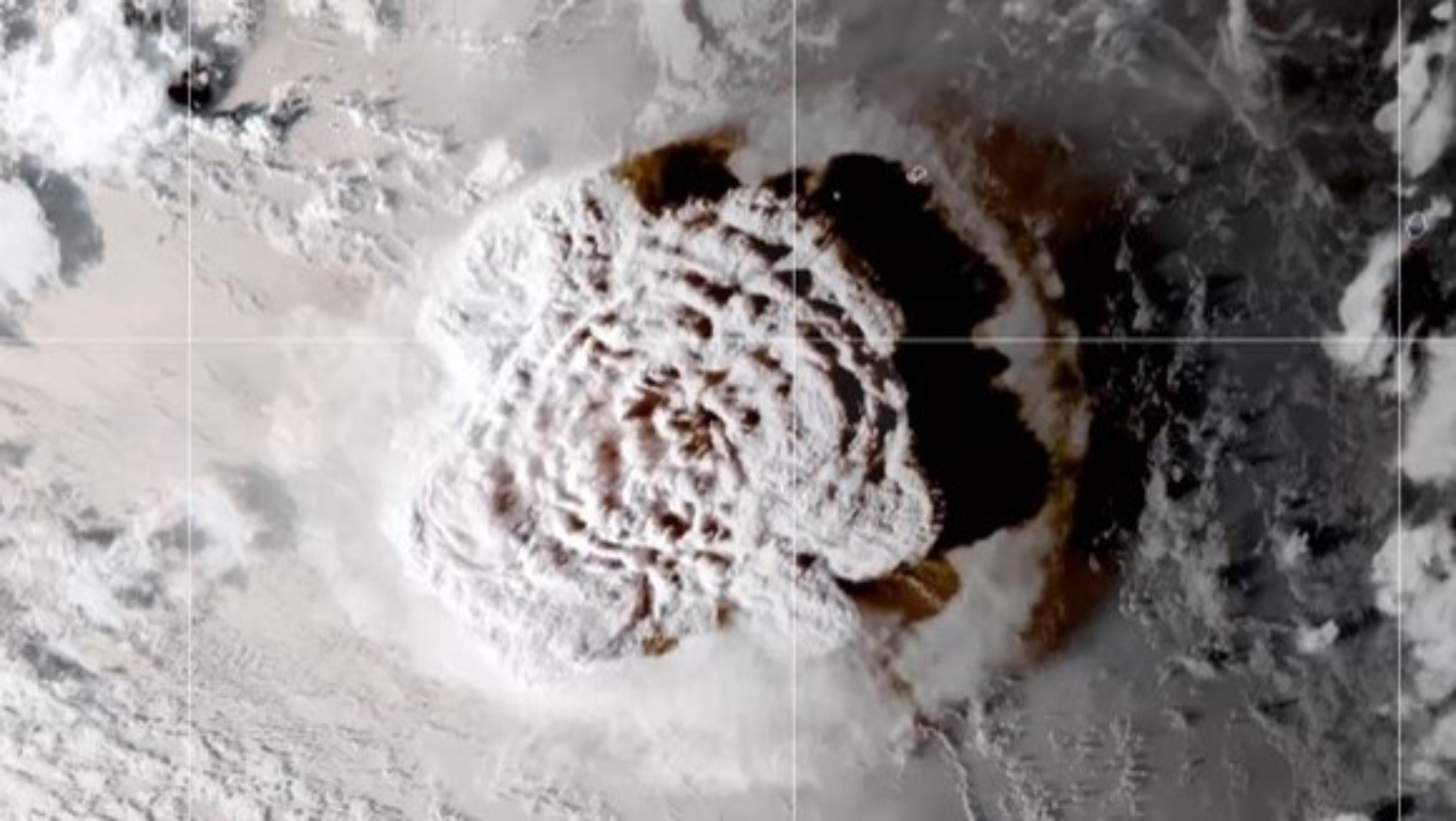Underwater volcano eruption 7,300 years ago is the largest in recorded history
The Kikai-Akahoya eruption — the largest volcanic explosion in recorded history — ejected more than 80 cubic miles of volcanic rock and ash off the southwestern coast of Japan 7,300 years ago.

Scientists have identified the largest volcanic eruption in recorded history — an explosion 7,300 years ago that ejected more than twice as much rock and ash as the previous record-holding eruption of Indonesia's Mount Tambora in 1815.
The earth-shattering blast, known as the Kikai-Akahoya eruption, occurred south of Japan's Kyushu island, where the Philippine tectonic plate slips beneath the Eurasian plate. The underwater Kikai volcano is known to have produced three major eruptions in the last 140,000 years, the latest of which was the Kikai-Akahoya eruption, according to a study published online Feb. 1 in the Journal of Volcanology and Geothermal Research.
While scientists already knew about the ancient volcanic blast, the new research has revealed its record scale and pinpointed it as the largest eruption of the current geological epoch. "The eruption has been known for a long time, but these authors are increasing our knowledge of it a lot," Tim Druitt, a professor of volcanology at the University of Clermont Auvergne in France who reviewed the study, told Live Science in an email.
Scientists had previously found it difficult to pin down the eruption's size and what triggered it because of the inherent challenge in accessing the underwater volcano.
In the new study, researchers gathered seismic data to create a detailed map of the seabed around the volcano. The map revealed vast underwater deposits, which the team sampled by drilling into the seabed in several locations with a remote-controlled robot and extracting sediment cores.
The sediment hauled to the surface revealed a layer spanning 1,740 square miles (4,500 square kilometers) that contained volcanic glass matching the composition and timing of the Kikai-Akahoya eruption. The glass and other volcanic debris amounted to roughly 17 cubic miles (71 cubic kilometers) of material ejected into the sea by the eruption — almost double the estimates published in previous research.
Get the world’s most fascinating discoveries delivered straight to your inbox.
The researchers combined these findings with existing estimates of volcanic debris from the eruption that was deposited on land. They found that the mega eruption expelled a total volume of 80 to 110 cubic miles (332 to 457 cubic km) of material — enough to fill Lake Tahoe in the western U.S. twice over.
The new estimate means the Kikai-Akahoya eruption is "probably the largest eruption of the Holocene," the researchers wrote in the study. The Holocene Epoch is a geological period that began 12,000 to 11,500 years ago at the end of the last ice age and which we still live in today.
"Their conclusion that it is the largest Holocene eruption is valid," Druitt said. "The Minoan eruption of Santorini has also been proposed as the largest Holocene eruption, but is now known not to be."
The Kikai-Akahoya eruption still pales in comparison to more ancient eruptions, such as the cataclysmic explosion of Sumatra's Toba supervolcano 74,000 years ago, which pumped out an estimated 1,200 cubic miles (5,000 cubic km) of magma.

Sascha is a U.K.-based staff writer at Live Science. She holds a bachelor’s degree in biology from the University of Southampton in England and a master’s degree in science communication from Imperial College London. Her work has appeared in The Guardian and the health website Zoe. Besides writing, she enjoys playing tennis, bread-making and browsing second-hand shops for hidden gems.


